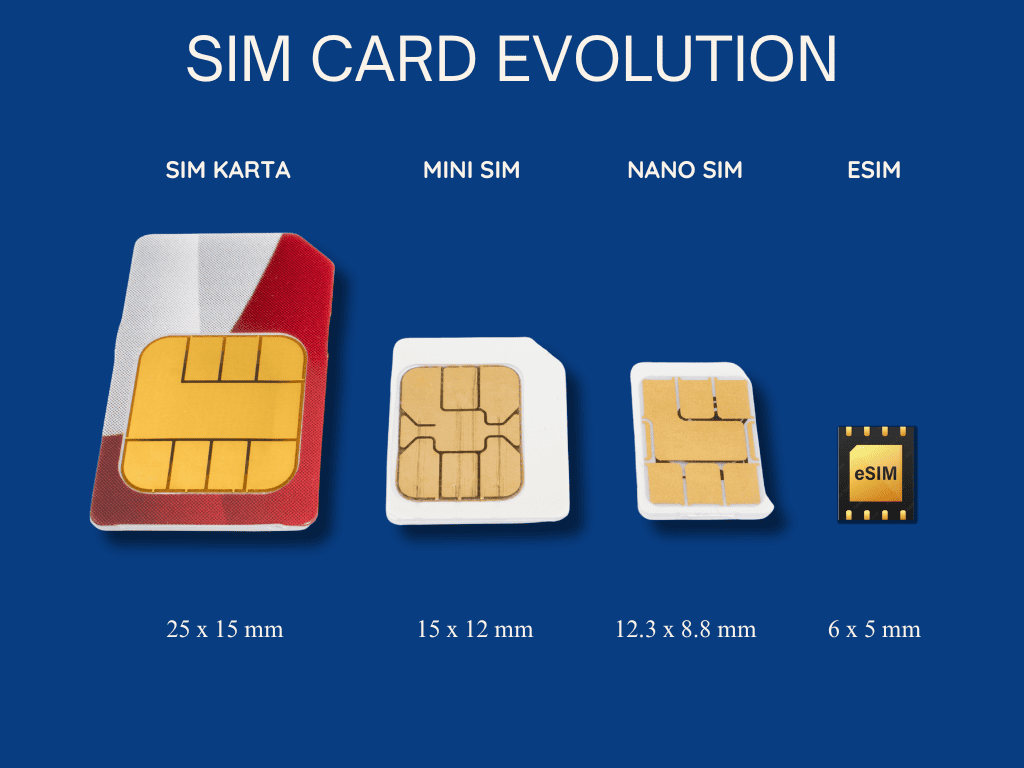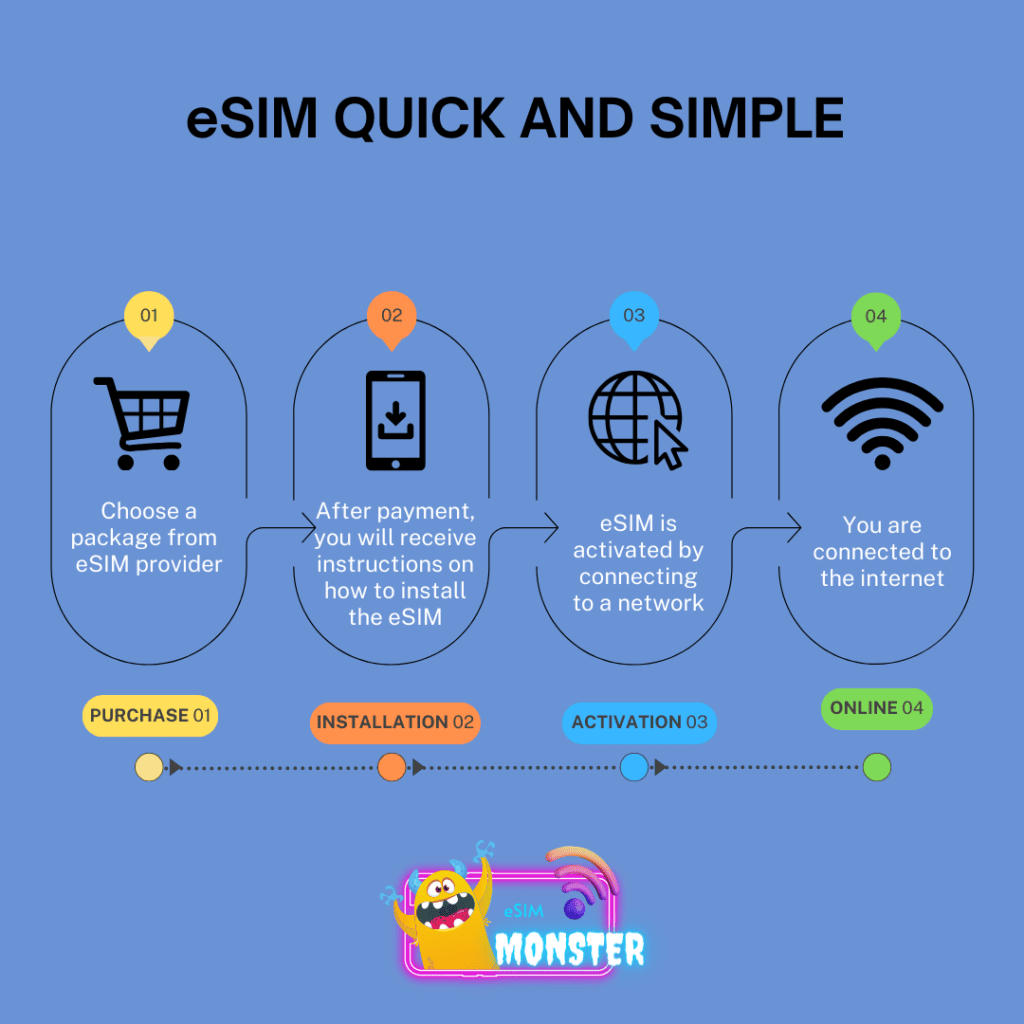You must have heard of eSIM. Whether you have a classic SIM card, nanoSIM or eSIM in your mobile phone may not matter at first glance, and for the average user, nothing changes. However, the opposite is true. It makes life easier, especially if you’re going abroad where your roaming data won’t suffice. Let’s take a closer look at what is an eSIM and what it offers.
What is an eSIM?
It might seem that the “e” at the beginning stands for “eletronic” (like e-shop, etc.). eSIM stands for “embedded SIM“, which means that it’s a SIM card built right into the device. Better said, an embedded chip that allows operators’ SIM cards to be installed. Unlike traditional SIM cards that we have to physically insert into the device, the eSIM is virtual and stored directly in the device’s memory. This means we don’t have to replace it or handle physical cards. It’s a great replacement for the plastic SIM card.
It is expected that almost everyone will be using eSIMs by around 2026, as new mobile phones already have this technology mostly built-in and most users will gradually upgrade to newer devices.

Benefits of eSIM
It may not seem like it at first glance, but eSIMs have many positives that translate into their use and you’ll quickly get used to all the simplification.
Easy installation
You don’t have to wait in line at your carrier. Installing an eSIM is easy, quick and can be done on the way to the airport or from the comfort of your home.
Global usage
With eSIM, you can use your device anywhere in the world without having to find and swap local physical SIM cards.
Cheaper
Save on roaming charges. With an eSIM, you can enjoy data abroad for less than your operator will offer. What’s more, operators will also save money as they won’t have to deal with the cost of producing, managing and distributing SIM cards. Switching to another operator will also be easier.
Better phone features
Thanks to the fact that the phone does not have a SIM card slot, it becomes more resistant, especially against water. Overall, thanks to the built-in chip, you don’t have to worry about anything regarding the slot such as its malfunctioning, SIM swapping, etc. It also gives you more space in your phone.
Greener
As mentioned before, this eliminates the need for physical plastic cards and all the packaging for them, thus saving nature a little bit. And this also applies to distribution, where there will be no need to transport SIM cards anywhere.
The only disadvantage I see with eSIM is that if you change your phone, you have to set everything up all over again. And that’s because you can only download an eSIM once. All providers warn you that if you delete the eSIM, you can’t reinstall the same one. That’s true for the disposable ones. You always have your number with your domestic provider, but you have to contact them to arrange everything. Some phones (especially the iPhone) already allow you to transfer an eSIM from your old one to a new one. Everything is evolving so we believe it will be easier in the future.
How does eSIM work?
For an ordinary user, there is no need to go into detail. As mentioned, the eSIM is built into your phone. In order for the eSIM to work, you must first buy it from your chosen operator or provider (Airalo, Nomad, etc.). You will then be given installation instructions. Most of the time, you just need to go to your phone’s settings and start the eSIM installation there. The easiest option is to scan the QR code provided by the eSIM vendor. Then you just activate the eSIM and you’re online.
The big advantage is that you can have multiple eSIMs installed and switch between them as needed, or even have more than one on at the same time. In this case, it depends on the phone. As a rule, you can have two enabled.

Does my phone support eSIM?
You can find out very easily. Just go to your phone’s settings and select “Mobile Data” (or “Connections”, “SIM Card Manager”, etc.). If you have the option “Add eSIM” there, your phone offers this option. For more information read our article.
Use for travellers
The eSIM currently offers the most benefits for travellers. Almost all of us want to be online while travelling. In the past, this meant having to stand in line at the airport at a local provider’s booth or find a store in town to get a local SIM card. In some countries you also need to show your passport. With an eSIM, you simply connect as soon as you arrive at your dream destination.
Benefits when travelling
- no need to find a local SIM upon arrival
- avoid unnecessary paperwork, registration with operators and copying travel documents
- much cheaper than roaming
- easy installation
- you can be available on your existing phone number at the same time
- it is a more eco-friendly option as you avoid disposable plastics
Disadvantages when travelling
- the device must be able to install an eSIM
- so far, in most cases, it is slightly more expensive than if you get a plastic SIM at the destination
Frequently asked questions
What is the difference between an eSIM and a physical SIM card?
An eSIM is an embedded SIM card stored directly in the device, while a physical SIM card is a plastic card that must be inserted physically into the device.
What are the benefits of using an eSIM?
eSIM offers greater flexibility when switching between mobile operators, dual SIM functionality and easy QR code activation.











